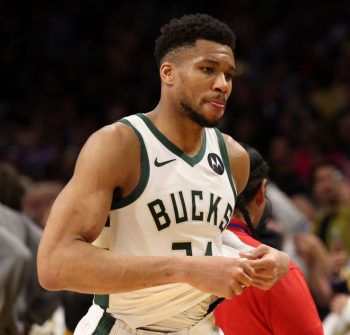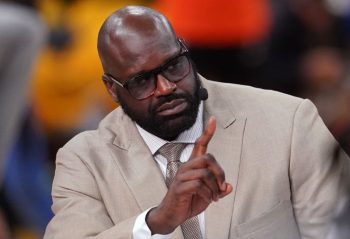NBA
Kristaps Porzingis Is Quietly Rounding Into Form

The Dallas Mavericks are far ahead of schedule.
Just a single season removed from their worst finish since 1998-99, the Mavericks are already back in playoff position, poised for another decade of success despite the departure of Dirk Nowitzki. The chief means behind their rapid rebuild requires no explanation. Luka Doncic will almost surely finish top-five in MVP voting this season and has a convincing case as the league’s best 20-year-old of all-time. At this rate, it’s even only a matter of time until Doncic supplants Dirk Nowitzki as Dallas’ greatest player in franchise history.
But Doncic’s ankle-breaking step-back triples, dazzling finishes and ingenious all-court playmaking won’t lift the Mavericks to legitimate contention alone. The front office has done typically well rounding out the roster with solid, versatile contributors who fit snugly next to Doncic, while Rick Carlisle’s consistent ability to get the most from his bench assures Dallas of competence on which most teams can’t rely without their superstar. The Mavericks couldn’t have planned to rise up the Western Conference hierarchy quite so rapidly, but already possess the rough outlines of a team ready to compete for a title.
Smoothing those edges into surefire championship contention will be no easy task. Tim Hardaway Jr.’s evolution into a valuable role player could complicate Dallas’ plans to make a splash in free agency this summer. The team projects to have more cap space in 2021, but Mark Cuban understands the fickle unknown of free agency better than any owner in basketball after years of missing out on marquee, high-priced targets.
Luckily for the Mavericks, they aren’t necessarily looking to free agency or the trade market to find Doncic a worthy co-star. Swinging for the fences last year by bringing in Kristaps Porzingis afforded the luxury of building around a potentially elite tandem from the ground up.
It’s no secret that Porzingis’ acclimation to the Mavericks, not to mention the court after spending a year-and-a-half off it while recovering from a torn ACL, is ongoing. Dallas’ plus-5.9 net rating with that pair on the floor is solid, far better than the team’s season-low mark after trudging into the All-Star break by losing four of its last six games. Still, there’s no getting around the fact that the Mavericks have fared far better with just one of Porzingis or Doncic on the floor despite their seemingly symbiotic offensive fit.
Dallas outscores opponents by 10 points per 100 possessions when Doncic plays without Porzingis, a feather in his MVP cap. The Mavericks’ plus-8.9 net rating when Porzingis plays without Doncic is almost equally strong, but the former hasn’t received near the praise bestowed on the latter for propping up similar lineups.
Even a multi-faceted big like Porzingis just can’t affect the game the way a maestro alpha dog like Doncic does. His abject struggles to punish smaller defenders on switches early in the season was a popular early-season talking point among national media — plus Carlisle’s December acknowledgment that Porzingis can better help his team by spacing the floor fueled that narrative further. Dallas didn’t sign Porzingis to a five-year, max-level extension before he ever donned a Mavericks uniform for him to shoot 34.5 percent on post-ups and 23.1 percent in isolation, per NBA.com/stats.
The Mavericks will always be best served with the ball in Doncic’s hands, but that hardly means they don’t need Porzingis to be much, much better than he’s been for the majority of this season when possessions devolve into one-on-one play. The good news? Recent evidence suggests Porzingis still has the goods to exist as that trump card, at least on a part-time basis.
With Doncic sidelined by a sprained right ankle for seven straight games early this month, Porzingis forcefully reminded the basketball world why optimists once considered him a potential MVP candidate in his own right. He dropped 38 points and 12 rebounds on the Houston Rockets, 38 and 12 on the Indiana Pacers and then 32 and 12 on the Memphis Grizzlies in successive appearances. After being limited against the Washington Wizards by a broken nose, he returned three days later to score 28 points on 17 field goal attempts against the Utah Jazz.
A five-game sample size is small, obviously, but the scope of Porzingis’ labors and the perception of his play in 2019-20 overall make his dominance without Doncic noteworthy regardless. He averaged 27.2 points and 10.2 rebounds over that brief stretch, shooting 50 percent from the field and 40.9 percent from deep on nearly nine three-point attempts per game.
But even without Doncic setting him up, Porzingis did most of his damage with help. Whether he was popping off screens or attacking overzealous close-outs off the dribble, he was still far more of a play finisher than starter — an indication of his limits as a true offensive fulcrum.
Where Porzingis’ play diverged from this season’s norm was his sudden propensity for drawing fouls. He took at least 10 free throws in just two games prior to Doncic going down, but surpassed that total versus Indiana, Memphis and Washington before attempting nine freebies against Utah. Porzingis lived at the line when Doncic returned to the lineup against the Sacramento Kings, too, connecting on 10-for-12 free throws during a 27-point outing.
Porzingis’ free throw rate now stands at .293, a hair off his mark during his breakout final season with the New York Knicks. Is that uptick and his recent scoring binge proof that Porzingis is merely getting more comfortable on the court two years removed from surgery? Or, rather, that the Latvian and Doncic still have work to do before reaching their ceiling as a duo?
The answer, obviously, lies somewhere in between. Porzingis’ rising production is what matters most — and should have the rest of the league extra wary of Dallas going forward – in both short and long-term futures.











